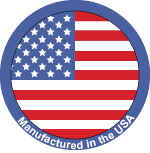
INCI: Triglycerides of Caprylic/Capric Acid (and) Melissa Officinalis (Lemon Balm) Leaf Extract
Oh, Melissa, how I love thee! Thy leaves are soft and nectar-like honey! Thou keeps my bees so happy, my skin like dew, and my poem funny!
Ever wonder why folks wax poetic for Lemon Balm (Melissa officinalis)? I haven't a clue! I know that my excitement level goes way up when we talk about adding this herb to my garden. Lemon balm has a long history, over 2,000 years, of being used to treat many ailments. Modern research is slow-moving and has validated some of the claims made by ancient peoples, and it has also proven some claims ineffective. The name Melissa is a reference to honey bees (Apis mellifera) and how much the bees love this plant. Be careful that you don't confuse Melissa with Monarda (bee balm)!
The herb leaves were used during the Middle Ages in public bathhouses to promote healthy, vibrant skin. I'm not sure that I would go to a public bathhouse, my imagination has probably carried me away, but I would add lemon balm to my own tub! We think this extract is a real treat in skin and hair care. We are willing to bet that you will notice skin improvement when you add this extract to your body care products. The most thrilling part of using Lemon Balm Extract will be your impromptu poetry!
The extract has no odor and will not compete with your choice of scented oils.
Usage rates for this oil-soluble extract are generally 0.1 to 10%. We use up to 1% in the liquid bases like shampoo and conditioner and 2 to 4 % in massage oils. Under extreme conditions, we can see the usage as high as 10%, but only for indulgent personal care.









